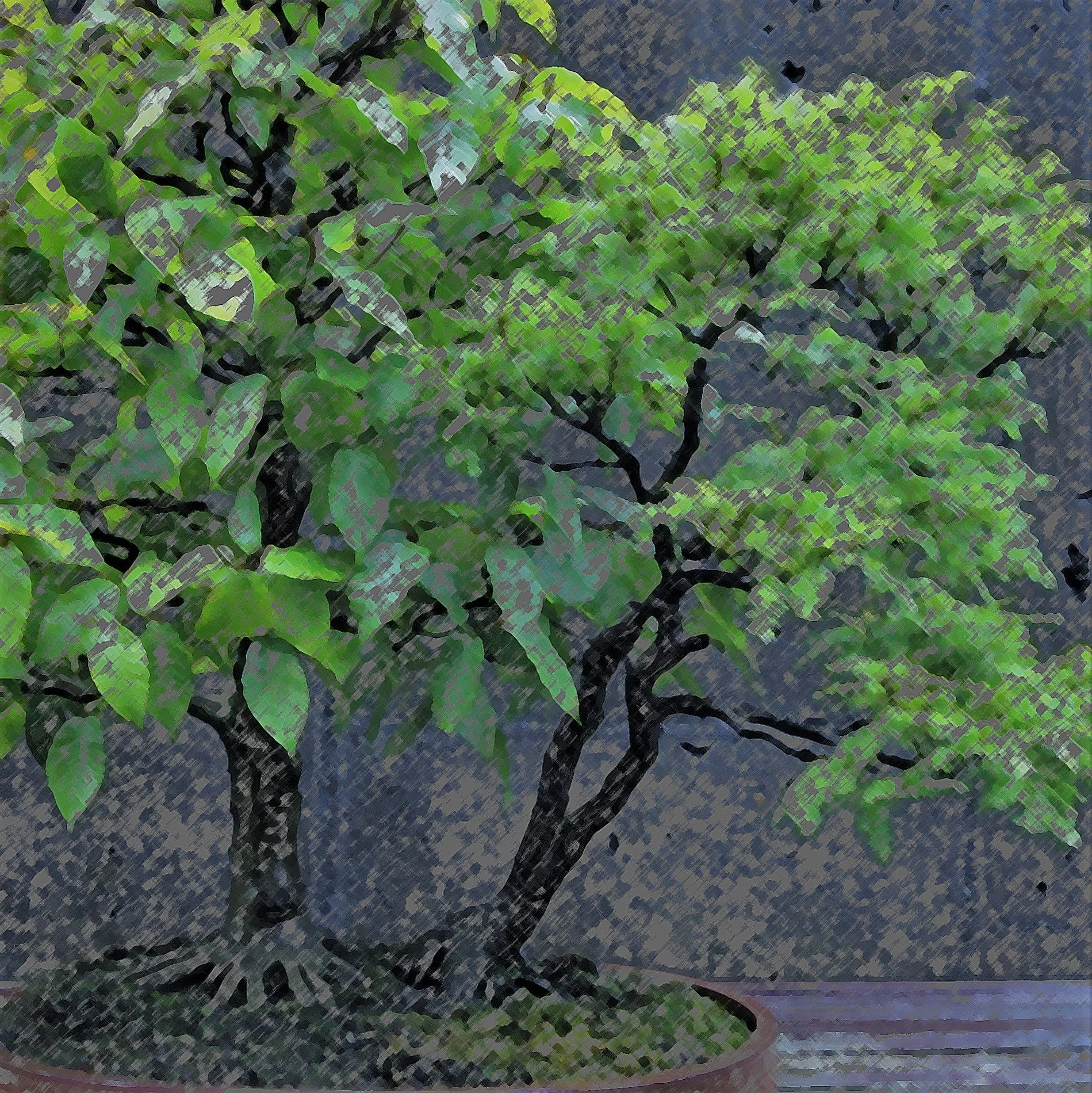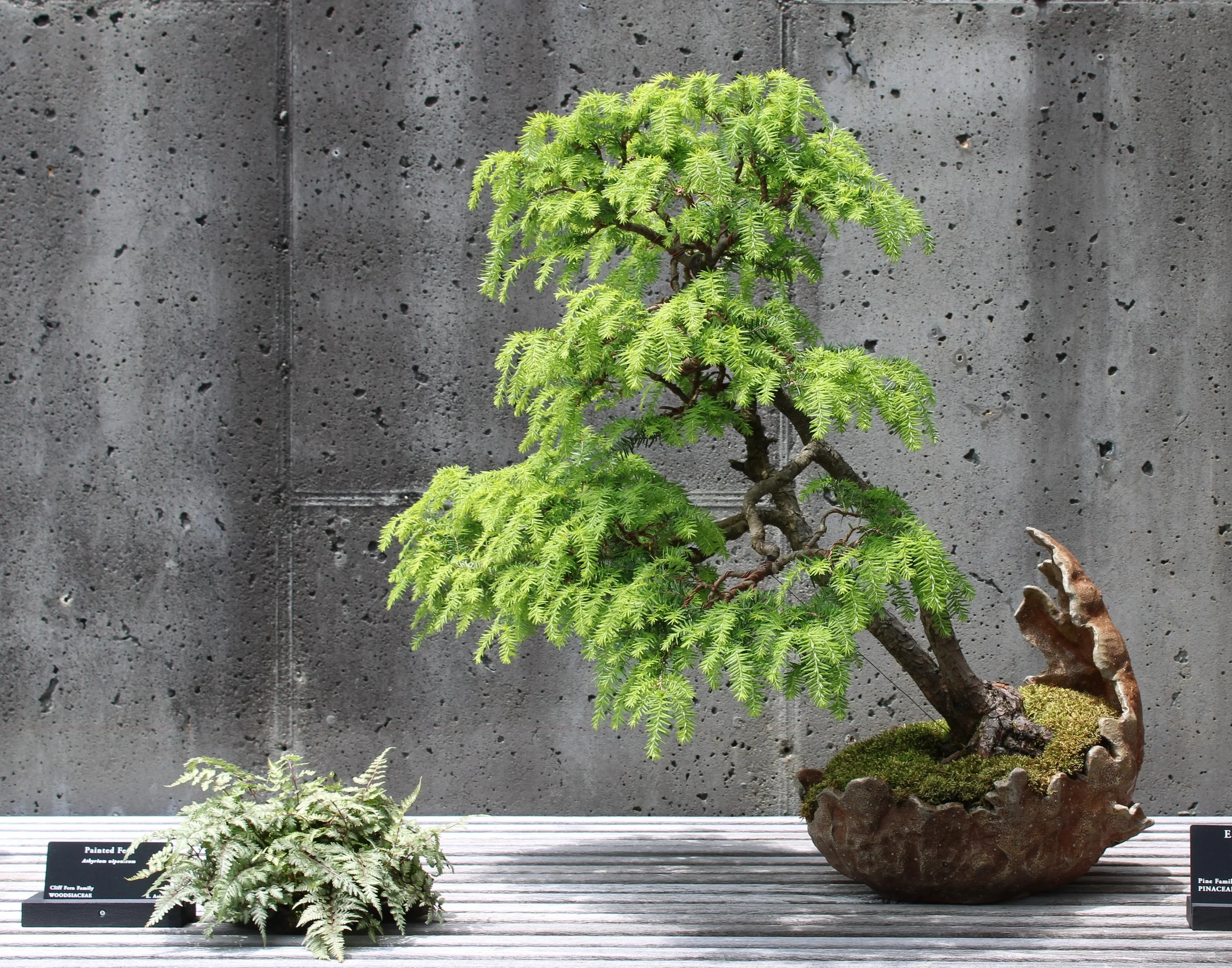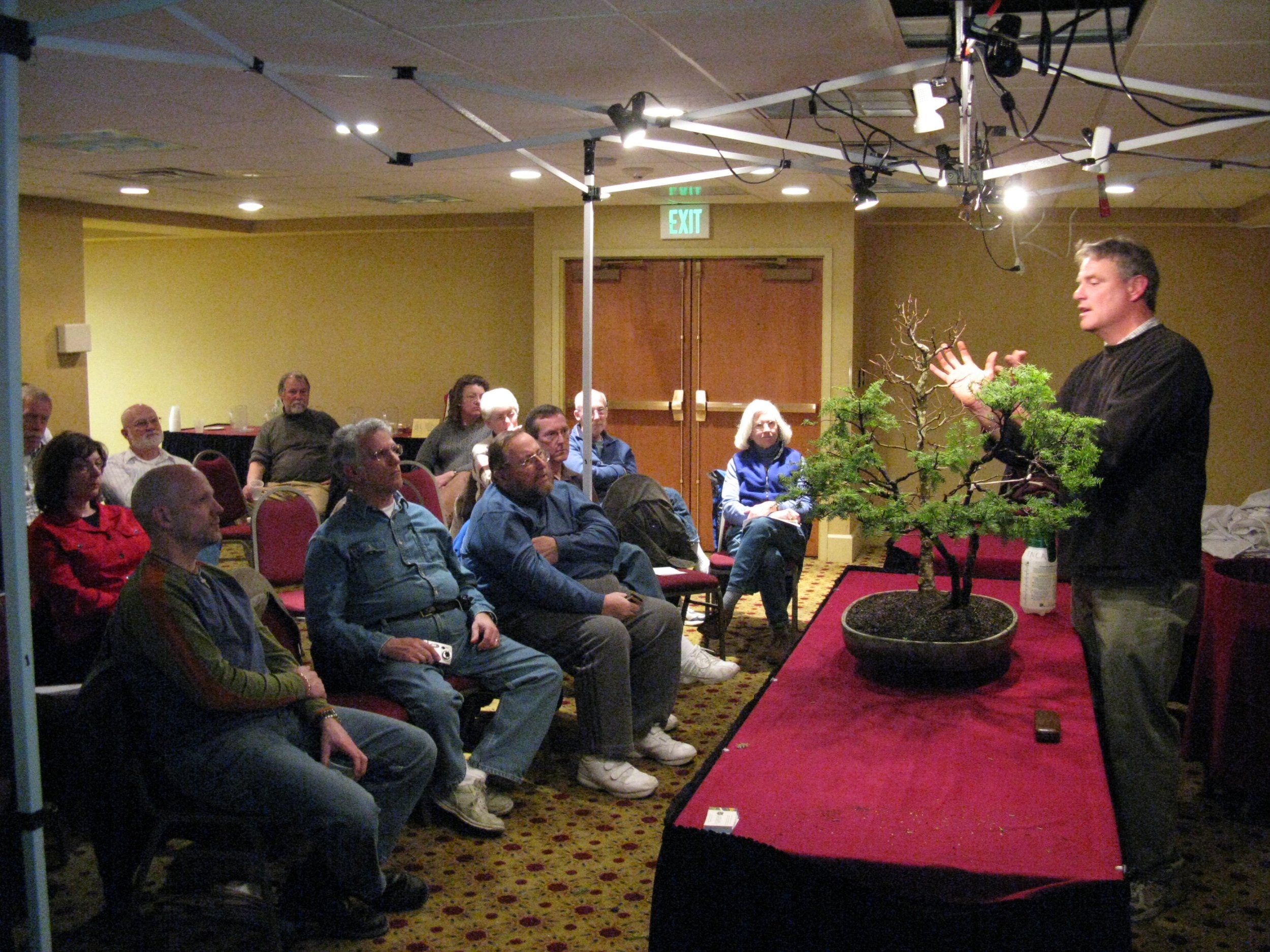Eastern Hemlock - Part 1
There is a tendency to think of bonsai as being somehow static. That is, many people seem to believe that once a bonsai is created it remains just so throughout its lifespan. People who grow bonsai don't think like this because experience teaches them otherwise.
As living, growing entities, bonsai are bound to change over time, just as anything you can think of changes eventually. The fact that most bonsai are made out of tree species plays into the misconception of constancy. Trees typically grow and change so slowly that humans cannot witness them doing it, and so we must rely on tools like comparative analysis using measurements recorded over time or photographic documentation to prove it happens. The illusion of unchanging permanence is further aided by the way most people experience bonsai, which is by seeing them displayed at shows or depicted in photographs. The idea in both cases is to present the bonsai in a state of suspended perfection, or near-perfection. Standard bonsai shows last for only a few days and no change in the appearance of the plant occurs in that amount of time, unless something goes awry. Photographs capture a moment in time and freeze it as an image, even as the subject of the photograph continues thereafter to change. Exhibitions and photographs both distort the reality of bonsai because both are primarily concerned with creating an illusion for the purpose of enhancing appreciation.
Change is inevitable because a bonsai is a living plant with distinct phases of development throughout the course of its life, and is subject to disease, physical damage and death. But change also occurs because the bonsai plant is in a relationship with a person, or a series of people. The human element of the bonsai paradigm intentionally alters the plant for the purpose of making it fit the paradigm. The reality is that bonsai change all the time.
Some bonsai change more than others. The lone eastern hemlock (Tsuga canadensis) in the Arboretum's bonsai collection is a good example. Here is how our eastern hemlock bonsai looks now, out on display in the bonsai garden:
This specimen is currently a two-trunk tree, but when it originally came to us it was a three-trunk tree, and for a while it was part of a three-trunked, two-species planting. What follows is the story of this shape-shifting bonsai.
Long before the use of native plant material became a distinguishing feature of bonsai at The North Carolina Arboretum, others were exploring the possibilities. Using plant species that can be found where you live is a natural inclination for any bonsai grower with an open mind. When bonsai artist Yuji Yoshimura moved from his native country of Japan to the United States in 1962, it didn't take him long to start experimenting with the different plant species he found in his new environs. He visited a landscape nursery near where he lived in Tarrytown, New York, and bought a very young eastern hemlock that he then began training for bonsai use. I do not know if Mr. Yoshimura kept that hemlock himself the whole time, or if he perhaps sold it at some point only to reacquire it later, but it was among his collection when I went to study with him in 1995. He presented it to me as a donation for the Arboretum's nascent bonsai collection at the conclusion of my stay.
Receiving a gifted specimen from one of the true bonsai greats of the twentieth century was a thrilling stroke of good fortune, but the tree itself was not in the best shape. Mr. Yoshimura was not in the best shape himself by that time in his life, and that probably accounted for the bonsai being a little unkempt. Here is what it looked like at the time of donation in January of 1995:
The hemlock at the time of donation was mature, at least thirty years old, and had seen many years of development. It was also leggy, particularly in the limbs coming off the most dominant of the three trunks. Leggy in this context means that the branches were mostly bare of foliage until reaching the outer extremities of their length. Hemlocks generally are not inclined to push out new growth from old wood, so, over time, interior foliage can be lost and legginess will be the result. It didn't help that the main trunk lacked a substantial back branch when the specimen was seen from the preferred viewing angle. The tree also had a somewhat rigid appearance, due to the branches extending horizontally outward from the trunks in a predictable pattern, especially on the main trunk. There was wire on some of the branches, and a few serious wire scars on others.
The next image shows the eastern hemlock sometime during the growing season in 1996:
Here we see the tree is in good condition, and has filled out nicely. Despite that, the feeling of excess openness and rigidity is still an issue. You might be wondering about the robust fern expressing itself freely in the understory. That came with the bonsai and when it started growing the first year we had the tree I couldn't be certain if Mr. Yoshimura had put the fern there intentionally or if it had simply volunteered, so I let it grow.
By 1999 I had removed the fern and planted the hemlock in a large wooden box to promote better growth:
Good health and strong growth are evident, but the same problems persisted for this specimen. The foliage of the hemlock was full and in need of trimming at the time of this photograph, but still it was possible to look right through the middle of the crown. The primary branching was still stiffly horizontal, too, although I had tried repeatedly to alter that.
The next available image of this tree is from 2008, nearly ten years after the previous one:
The hemlock had found its way back into a bonsai pot and it remained a healthy grower, but the legginess problem had only gotten worse. The bonsai garden had opened in 2005 but this specimen had never been shown in it, indicating I had never reached a state of satisfaction with the tree's appearance. I wanted it to be good because of who had given it to us, but after thirteen years I still had not figured out what to do with this eastern hemlock. As a result it was often neglected while I gave attention to other specimens that were more cooperative.
I was formulating a new idea about the hemlock, though.
In late winter of 2009 I traveled to Harrisburg, Pennsylvania, to present a demonstration program to a combined meeting of the Susquehanna and Lancaster bonsai societies. The clubs had rented a hotel banquet room for the program and I went there with every intention of making an impression. I brought the problematic hemlock with me, along with another tree - an American beech (Fagus grandifolia):
I also brought along an LCD projector and a picture show featuring a couple hundred nature images I had collected over the course of countless walks in the forest. I had a boom box, too, and a CD of selected music from Richard Wagner's Ring Cycle. My host for this engagement was bonsai artist Jim Doyle of Nature's Way Nursery, and he set me up with a collapsible frame structure that had several spot lights attached to it. I worked under the spots in an otherwise darkened room while the nature slideshow played and Wagner's operatic music filled the air. Jim joined me at times to assist with the work. I didn't see the program because I was in it, but the audience seemed to think it was pretty good (click on any image for larger view):
Here is what was done in the demonstration: The main trunk of the three-trunk hemlock was removed and the remaining two-trunks were paired with the American beech. The problems with the hemlock were always most associated with the main trunk, while the two secondary trunks had much better features. The beech was of similar size to the part of the hemlock that was removed and it was planted in a similar position, so in effect it was a swap. There were still three trunks but now one was an American beech. Beech and hemlock are found together in nature often enough and require similar growing conditions, so the pairing made sense from both a horticultural and thematic perspective. I did not let the audience know beforehand what was going to happen, so when the main trunk was cut down (with Ride of the Valkyries playing in the background) it came as a shock.
It might seem inappropriate to make a public spectacle out of dismantling forty-five years of developmental bonsai work, but I didn't see it that way. I arrived at the decision to make the alteration only after years of trying to work with the tree as it was, and I deliberated at length about the move before making it. It meant an awful lot to me that the hemlock was a gift from Mr. Yoshimura, a teacher who had the greatest influence on my bonsai thinking, and the decision to so drastically alter the bonsai's appearance was not made lightly. Doing the redesign work onstage was an additional challenge. That choice involved risk but also offered a chance to show the audience something it hadn't seen before, something that would make the experience memorable. It was Mr. Yoshimura who first taught me to strategize that way when doing public bonsai demonstrations. He was a great showman and some of his demonstrations were legendary.
Here is an image of the new arrangement, made back at the Arboretum immediately following the demonstration program:
Any bonsai looks a little rough after a demonstration, especially if a substantial alteration has been undertaken. Faith is required, along with a bit of imagination, to see past the moment and focus on an outcome that is perhaps years away. That visionary aspect of bonsai design was another of Mr. Yoshimura's strengths. I should add that my decision to take a chance and try for something different, to be creative and innovative in my thinking, was also a product of Mr. Yoshimura's influence. Those were traits he stressed to me when I studied with him. I was paying attention.
To be continued…











